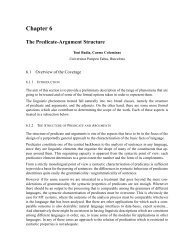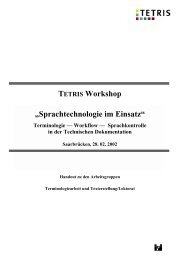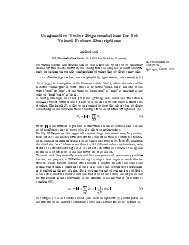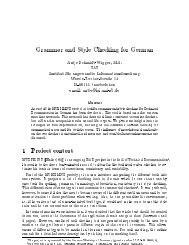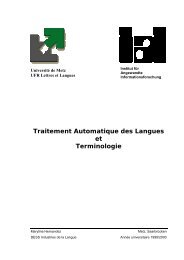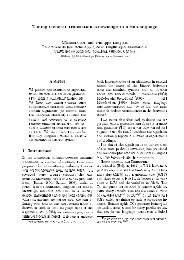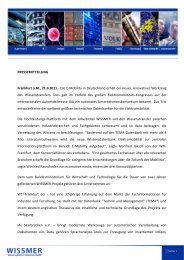Linguistic Modeling for Multilingual Machine Translation
Linguistic Modeling for Multilingual Machine Translation
Linguistic Modeling for Multilingual Machine Translation
You also want an ePaper? Increase the reach of your titles
YUMPU automatically turns print PDFs into web optimized ePapers that Google loves.
116 CHAPTER 11. LEXICAL FUNCTIONS<br />
order to establish reference. Further examples come from Russian and Serbo-<br />
Croatian <strong>for</strong> the concept of 'Russian' and 'Serbian'. Spanish frequently uses<br />
support nouns <strong>for</strong> colours:<br />
(175) a. German:<br />
ein Japaner - eine Japanerin<br />
a Japan MASC - a Japan FEM<br />
`a Japanese man - a Japanese woman'<br />
b. ein Weiser - eine Weise<br />
a wise MASC - a wise FEM<br />
`a wise man - a wise woman'<br />
c. Russian:<br />
na russkom zyke<br />
na russkom jazyke<br />
on Russian language<br />
`in Russian'<br />
d. Serbo-Croatian:<br />
na srpskom jeziku<br />
on Serbian language<br />
`in Serbian'<br />
e. Spanish:<br />
de color naranja<br />
of colour orange<br />
`orange'<br />
In any of these cases the concept is expressed by an adjective plus a supporting<br />
noun, where the semantic space denoted by the adjective is included in the<br />
space denoted by the noun (cf. (62), pg.46). Comparing the inclusion relation<br />
of Japanese and man with the concept relation of white car in (61) pg.45, it<br />
becomes clear that we have to use the adjective as the base <strong>for</strong> the translation.<br />
Accordingly, the German noun Japaner is mapped onto the English adjective<br />
Japanese (cf. (176a)). The support noun man has to be regenerated according<br />
to monolingual lexical specications between IS and CS (cf. (176b)).<br />
IS<br />
(176) a.<br />
a<br />
p<br />
sit japan in bus



